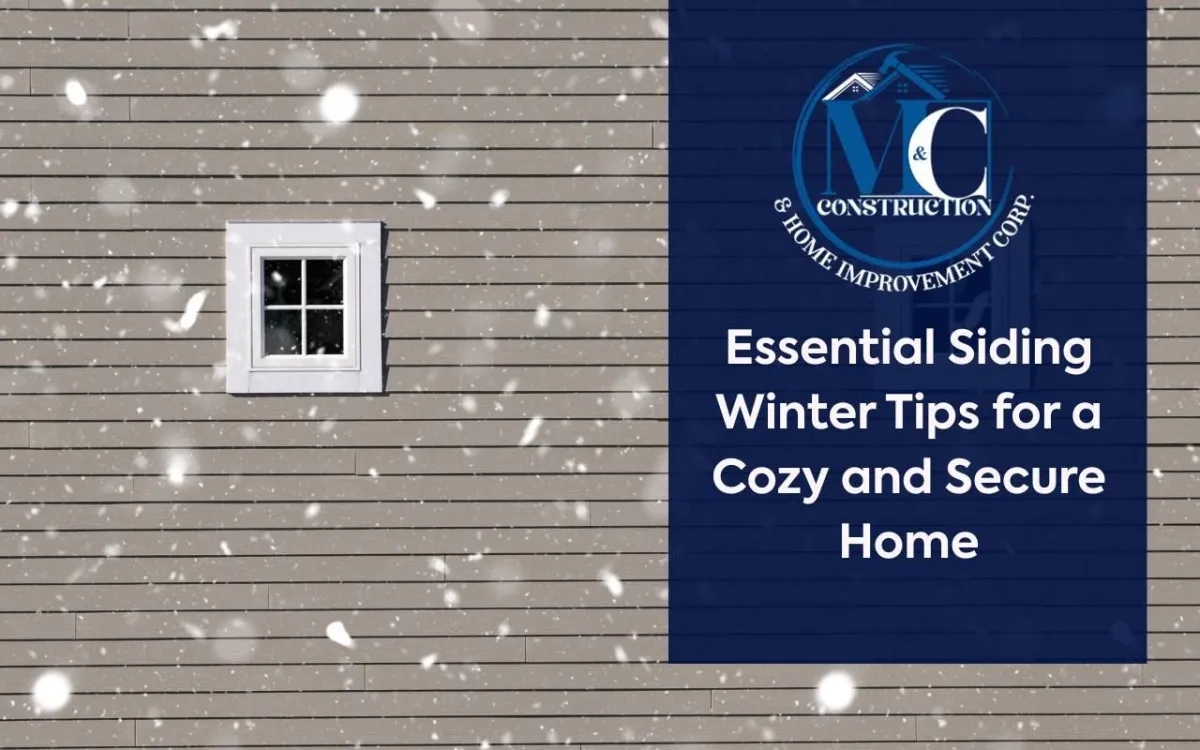
Essential Siding Winter Tips for a Cozy and Secure Home
As temperatures drop and frost covers the landscape, cozy evenings indoors become more appealing. Yet, before enjoying those moments, it’s vital to prepare your home’s siding for winter challenges. With the right siding winter tips, you can keep your property secure, energy-efficient, and comfortable all season long. Small actions now prevent larger issues later. Proactive preparation ensures your siding stands strong, helping you enjoy winter with peace of mind.
Evaluating Siding Condition Before Winter Hits
Inspect your siding before the first snowfall. Look for cracks, loose panels, or discoloration. Use a flashlight to spot gaps along seams. Gather tools like ladders, gloves, and a moisture meter to check hidden weaknesses. Document damage with photos to prioritize repairs. If your siding is older than 15 years, consider professional evaluation. Proper evaluation is among the most important siding winter tips for preventing problems later.
Inspecting for Cracks and Gaps
Run your hand along seams and edges to detect air leaks.
Check around windows, doors, and exterior fixtures for gaps.
Seal small cracks with quality caulk to stop air loss.
Addressing these small flaws prevents drafts and moisture infiltration. This practical siding winter tip also reduces heating bills and keeps interiors warm.
Sealing and Weatherproofing Techniques
Sealing gaps is crucial for durability and comfort. Select weatherproof caulk designed for your siding type. Clean the area thoroughly before applying sealant. Use expanding foam for larger gaps around vents or pipes. Replace brittle weatherstripping around doors and windows. Installing drip edge flashing over windows and doors adds extra protection. Combining these siding winter tips ensures your home withstands harsh weather.
Checking for Moisture Damage
Moisture behind siding can freeze and cause warping or cracks. Use a moisture meter to identify damp areas near gutters and vents. Watch for peeling paint, mildew, or soft wood. Remove damaged panels, dry the surface, and replace with treated materials. Adding a water-resistant barrier boosts future protection. These preventive siding winter tips keep your home safe from hidden water damage.
Cleaning and Maintaining Siding Surfaces
Scrub siding with warm water and vinegar or gentle cleaner.
Rinse thoroughly with a hose, avoiding high-pressure sprays.
Inspect for loose nails or panels needing reinforcement.
Clean siding performs better and lasts longer. Regular cleaning is one of the most effective siding winter tips for maintaining exterior durability. Fresh coatings also protect against moisture and keep siding attractive through cold months.
Ensuring Proper Insulation Behind Siding
Insulation reduces heat loss and improves energy efficiency. Foam board or spray foam fills gaps effectively. If insulation is thin, upgrade to higher R-value materials. Insulated vinyl siding combines cladding and foam for extra efficiency. Applying these siding winter tips ensures a warmer home and lower heating costs.
Addressing Ice Dams and Snow Buildup
Ice dams trap water that seeps behind siding. Keep gutters clear and direct water away from the foundation. Install snow guards on steep roofs to prevent sudden slides. Consider gutter guards to reduce clogs. If ice dams form, carefully remove snow with a roof rake. Managing ice and snow buildup is a vital siding winter tip for preventing long-term damage.
Protecting Siding from Winter Elements
Apply protective coatings to wood or fiber cement siding.
Extend downspouts to keep water away from walls.
Install snow fences to divert drifting snow from siding.
These protective measures add resilience to your exterior. Reinforcing siding with UV-resistant trim or storm panels enhances longevity. Following protective siding winter tips ensures long-term durability.
FAQs About Siding in Winter
How do I know if my siding needs repair before winter?
Look for cracks, warping, discoloration, or loose panels. Early signs of damage indicate repair is necessary before cold weather sets in.
What is the best way to seal gaps in siding?
Use exterior-grade caulk for small cracks and expanding foam for larger openings. Ensure surfaces are dry before sealing.
Can cleaning siding really improve performance in winter?
Yes, removing dirt and mold prevents moisture buildup. Clean siding resists decay and maintains insulation effectiveness throughout winter.
How do I prevent ice dams from damaging siding?
Keep gutters clear, extend downspouts, and install snow guards. These steps help divert water away from siding and foundations.
Is professional help always necessary for siding maintenance?
No, many siding winter tips can be handled by homeowners. However, extensive damage may require a professional contractor’s expertise.
Emergency Repairs and Contacting Professionals
Even with preparation, unexpected damage may occur. Keep an emergency repair kit ready with sealant, nails, and spare panels. If damage is significant, call a licensed siding contractor for quick, safe repairs. For expert help, explore our professional siding services. If you need urgent assistance, contact our team today to protect your home.
Enjoying a Cozy and Secure Home Throughout Winter
By applying these siding winter tips, you ensure a secure, efficient, and comfortable home. From sealing cracks to addressing snow buildup, each step reduces risks and costs. With proper care, your siding will protect your family through every storm. Enjoy the season indoors, confident that your home’s exterior is ready for winter’s challenges.